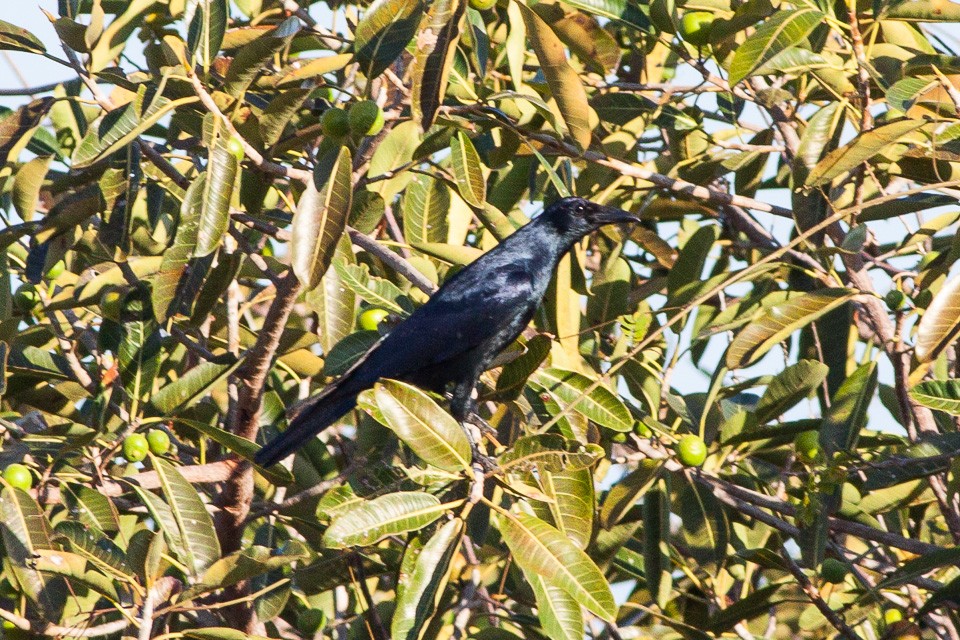Sinaloa Crow
A species of Crows Scientific name : Corvus sinaloae Genus : Crows
Sinaloa Crow, A species of Crows
Botanical name: Corvus sinaloae
Genus: Crows
Content
Description General Info
Description
The Sinaloa crow (Corvus sinaloae) is a crow native to western Mexico. Visually, it is nearly identical to and the same length (34–38 cm) as the Tamaulipas crow (Corvus imparatus). It has the same purple-glossed, silky, black plumage with a black bill, legs, and feet. The two species differ markedly in voice. It occurs on the Pacific slope from southern Sonora south to Manzanillo. The crow inhabits coastal regions where it forages on the seashore, semi-desert, open woodlands, river banks and hills up to 300 metres or more. It is very common around coastal towns and villages. Food is taken both on the ground and in trees. On the seashore it can be found turning over objects to find its food and it will take a wide range of invertebrates such as small shellfish, crabs, and insects. Fruits of many types are also taken and eggs and nestlings are also on the menu when opportunity arises. Often, this bird will nest in a thorny tree or a tall coconut palm where its nest is said to be similar to the American crow though smaller. The voice is radically different from the Tamaulipas crow in that it is quite high-pitched, jay-like, and clear: "ceow". That of the Tamaulipas crow is a surprisingly low, gruff, frog-like croak. Another species, the fish crow Corvus ossifragus from the southeastern seaboard of the United States is also considered genetically very close to both this species and the Tamaulipas crow Corvus imparatus and the three are now considered a "Superspecies". Other names: When lumped with the Tamaulipas crow, the more inclusive taxon was called Mexican crow. 
Size
38 cm
Nest Placement
Tree
Feeding Habits
Sinaloa Crow is omnivorous, consuming seeds, insects, fruits, and scavenging on roadkill and garbage, with a preference for figs. Its foraging is adaptable, capitalizing on both natural and human-provided resources.
Habitat
The sinaloa Crow is typically found in open and semi-open habitats that include towns, villages, and agricultural areas, as well as associated refuse dumps. They are also observed in coastal regions on wet sand during low tide and along river estuaries. Despite these coastal sightings, the sinaloa Crow generally avoids maritime environments and deserts. The broader geographical range revolves around regions with a mix of human settlements and agricultural landscapes.
Dite type
Omnivorous
General Info
Feeding Habits
Bird food type
Species Status
Not globally threatened.
Scientific Classification
Phylum
Chordates Class
Birds Order
Perching birds Family
Crows and jays Genus
Crows Species
Sinaloa Crow 